
9 minute read
The problem with tramp air


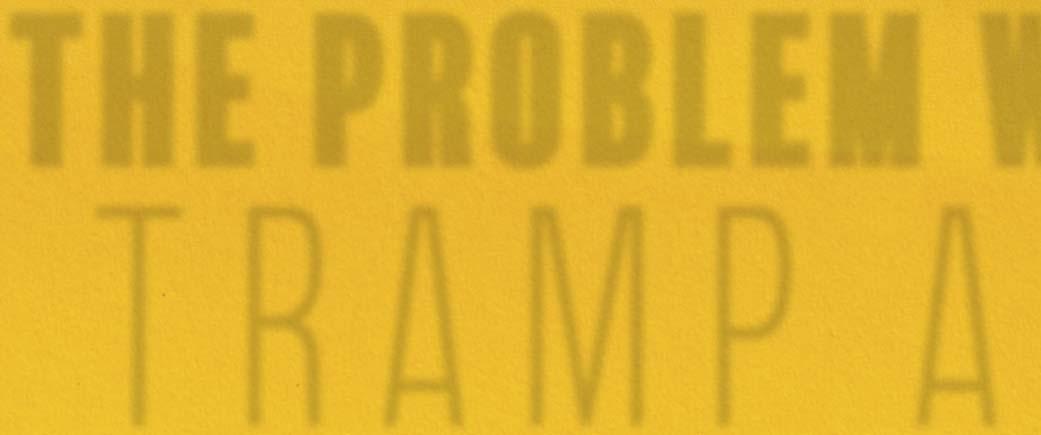
Bill Johnson and Chuck Baukal, John Zink Hamworthy Combustion, a Koch Engineered Solutions Company, USA, evaluate the impact of tramp air leakage on process heater operation, as well as corrective and preventative actions.

Process heaters are typically designed to operate with a negative pressure (draft). Most process heaters are natural draft, which means there are no fans or blowers because the air for combustion is pulled in by the negative pressure inside the heater. The draft in a heater is directly related to the difference in pressure between the inside and outside of the heater. Under normal operating conditions, the pressure inside the heater is signifi cantly lower than outside the heater due to the hot combustion products which are very low density and buoyant. As they rise in the fi rebox, they create a negative pressure or draft. The draft in a heater is a function of the fi rebox temperature, the height of the stack, and the location in the fi rebox. Since the fi rebox is less than atmospheric pressure, the combustion air is pulled into the heater through the burners. The draft is the highest (most negative) at the fl oor, which is typically where the burners are located. This maximises the amount of air that can be pulled into natural draft burners. Not only will air be pulled through open burner air registers, but it will also enter the fi rebox at any location that is not adequately sealed. This includes, for example, open air registers on burners that are out-of-service, tube penetrations, open sight ports, leaky explosion doors, and cracks in the heater shell.
Most heaters have been in service for many years, which means that it can often be very challenging to seal up unwanted air leaks. It is not unusual to fi nd that levels of excess O2 anywhere from 1 to 3% or higher enter the heater through leaks in the convection section. Air that enters the heater at locations other than the operating burners is often called ‘tramp’ air. Too much tramp air leakage can be very detrimental to process heater operation and potentially dangerous.


Effects on operations
Tramp air can impact the heater operation in many ways, each of which is briefl y considered below, including how they impact the operation of the heater.
Reduced heater efficiency
Air that leaks into a heater is cooler than the fl ue gas. Any air above that needed for combustion is absorbing energy, some of which is in the fl ue gas leaving the radiant fi rebox. The higher the fl ue gas temperature, the higher the sensible energy loss due to the tramp air leakage. This means a portion of the fi red duty is being used to heat this tramp air instead of heating the process. This reduces the energy effi ciency of the process. It also indirectly increases pollution emissions because the heater consumes more energy than needed when the thermal effi ciency is reduced due to tramp air.

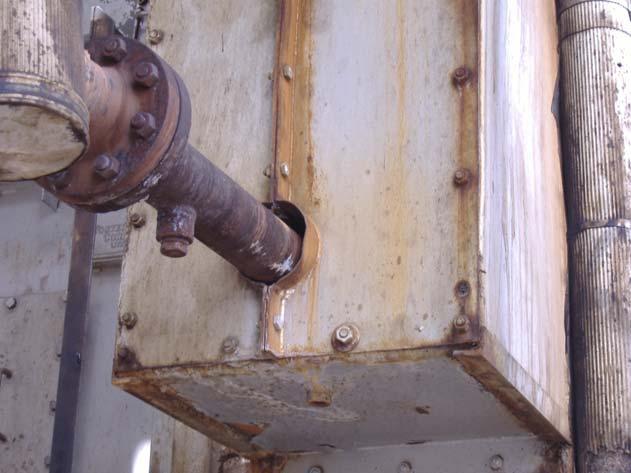
Figure 1. Air leaking around a process tube and header box.

Figure 2. Sealed sight port design. Increased NOX levels
Tramp air leakage may increase NOX levels. Since air is cooler and heavier than the fl ue gas, some of the tramp air will actually fall to the fl oor of the heater. This can increase the local concentration of oxygen near the burner gas tips. This can result in higher amounts of NOX formation because NOX increases with excess O2 during typical operating conditions. If a very large amount of excess air is used, NOX levels on a concentration basis actually decline because of dilution and lower fl ame temperatures. However, the thermal effi ciency also declines with higher levels of excess air, which again indirectly increases NOX as more energy is needed per unit of production.
High carbon monoxide and combustibles
Tramp air may produce high levels of carbon monoxide (CO) and possibly even combustibles. Depending on where the tramp air is coming into the heater, the measured excess O2 levels, which should be measured at the top of the radiant section (also known as the arch), may be within target levels and yet the burner fl ames may be starved for air. Another possibility is that tramp air infi ltration near the excess O2 sampling location can produce a false high O2 reading. This means there is actually less excess O2 in the heater than is measured. Either of these conditions can result in the burners being operated with a reduced amount of air, which can lead to increased levels of CO. If the fl ames are very starved for air, combustibles may also be high, which should not happen under proper operating conditions. While some of the CO and combustibles may be consumed as tramp air leaks into a heater at higher elevations, they are not nearly as effi ciently consumed as in the fl ame due to much lower temperatures in the fi rebox compared to the
fl ames.
Afterburning in the convection section
Possible afterburning in the convection section is related to high levels of CO and combustibles. Because tramp air can result from the burners being starved for air, the fl ue gas entering the convection section may contain high amounts of CO and combustibles. The convection section is normally where much of the tramp air enters a heater. This is due to the many tube presentations and the presence of header boxes. The oxygen in the tramp air results in oxidation of the CO and combustibles, which increases the temperature in this part of the heater. Combustion in the convection section can damage the fi nned tubes, tube supports, and tube sheets. It will also likely reduce the thermal effi ciency as there may not be enough residence time in the convection section to transfer as much of the heat before the combustion products exit the stack. This can result in high fl ue gas temperatures, which is an indicator of reduced thermal effi ciency.
Flame impingement on the process tubes
If the burners are short of air, then the fl ames tend to get soft and lazy. Flames that have lost some of their mixing energy are infl uenced more by the fl ue gas currents in the furnace. This condition can lead to the fl ames impinging on the process tubes. Additionally, fl ames that are starved for air tend to get longer due to the lack of air needed to complete combustion. Those longer fl ames may impinge on the convection section tubes. Prolonged fl ame impingement can lead to process tube

damage ranging from coking inside the tubes, to tube leaks, and to the worst-case condition of a tube rupture.
Unstable flames
A fi nal detrimental effect of signifi cant tramp air leakage is also potentially the most dangerous, which is unstable fl ames. If the process burner fl ames are lacking enough combustion air, the fl ames could be operating near the upper fl ammability or fuel rich limit. Operation near that fl ammability limit is dangerous because if the fl ames get close enough or go above that limit, they could become unstable and even fl ame out if there is not enough oxygen for combustion. Unstable fl ames may bounce or pulse (‘huff’). If a fl ame goes out in a heater that is above the ignition temperature of the fuel, the fl ame could be reignited when suffi cient air is found such as by tramp air leakage. This re-ignition could lead to equipment damage and personnel injuries.
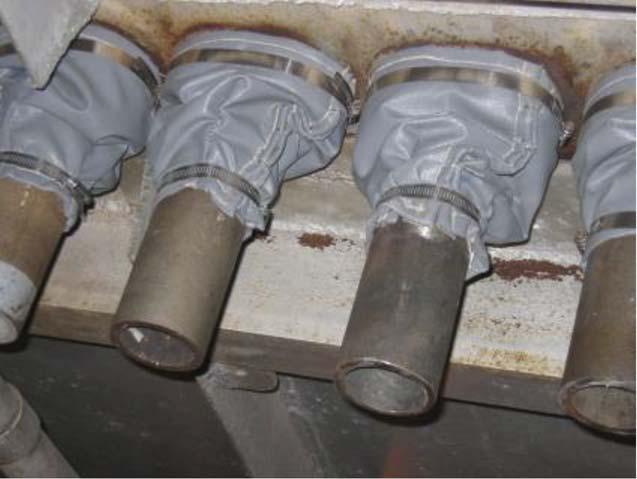
Figure 3. Engineered tube seals (image courtesy of Thorpe Corp., Houston, Texas, US).
Figure 4. Thermal image of a partially open explosion door.
Figure 5. Burner out-of-service with an open air damper.
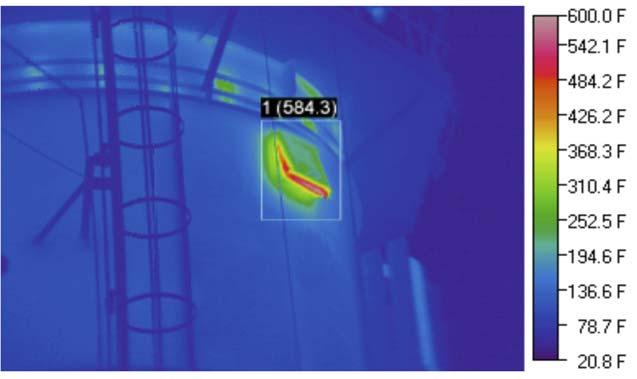
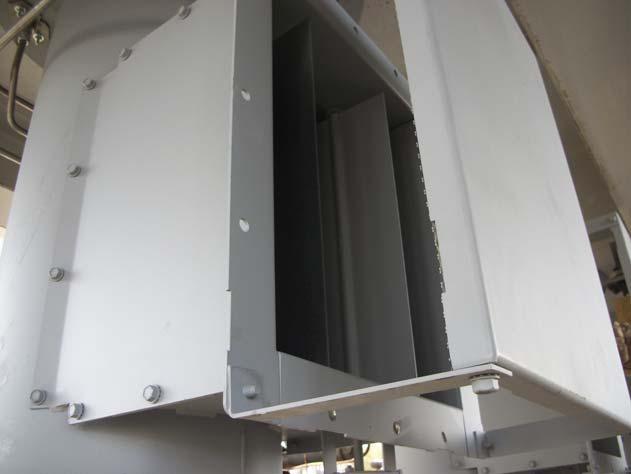
Corrective/preventive actions
The fi rst step in reducing the amount of tramp air is to locate areas where air is undesirably entering the heater. The most common places for air to leak into a heater are: the convection section; header boxes; process tube penetrations (Figure 1); partially or fully open sight, access, or explosion doors; and burners out-of-service with the air registers open.
Performing a visual inspection around the heater will normally show many areas that need attention. Some of the common materials used to seal around tubes and sight doors are ceramic blanket, engineered tube seals, braided rope gasket, and high temperature (500°F) silicone sealant. If the heater casing has developed cracks, these should be welded closed to prevent air infi ltration.
Sight doors and inspection ports should be closed when they are not being used. The heater should never be operated with the sight doors open to get enough air for combustion. There are some sight port designs (Figure 2) that are sealed with a shutter that opens inside the heater which dramatically reduce tramp air leakage.
When a heater is down for maintenance, smoke testing is a common way to determine where air is leaking into a heater. This can be done with smoke bombs placed inside the heater or with smoke cartridges placed in a blower inlet. The stack damper should be closed so that a slight positive pressure is created inside the fi rebox to force smoke out of the heater at the leak locations.
Tube penetrations can be a large source of tramp air. Engineered tube seals (see Figure 3) eliminate tramp air from getting into the heater around the tubes while also allowing the tubes to grow as the temperature increases.
Explosion doors should be sealed to eliminate tramp air. Figure 4 shows a thermal image of an explosion door that was not well sealed. This can allow a signifi cant amount of tramp air leakage.
It is not uncommon to fi nd burner air registers open on burners that are not in operation (see Figure 5). This may be an oversight or for convenience when the burner is brought back into service. However, open air registers on burners that are out-of-service can be a very large source of tramp air leakage because the burners are often located where the draft is the highest. Note that there will still be some air leakage through closed air registers as the seal is not designed to be air tight.
The effort and labour put into eliminating tramp air from the heater can result in better effi ciency, higher yields, improved fl ame quality, lower NOX and CO levels, lower tube temperatures, and improved safety. As far as possible, tramp air leaks should be minimised or eliminated. The reduction in fuel costs alone will normally far offset the cost of the inspection and repairs.










